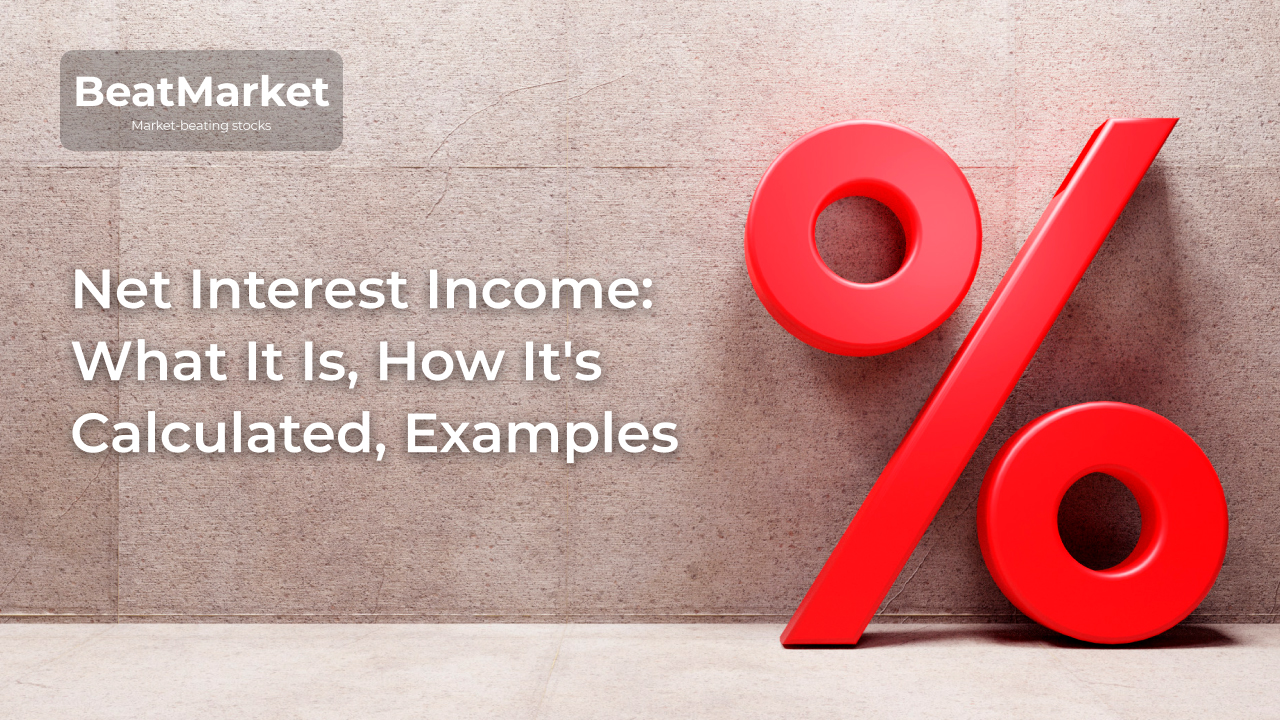One major difference between compound interest and simple interest is that simple interest is always accrued only on the principal deposit (or loan) amount, while compound interest is always accrued on the principal amount and previously accrued interest.
This fact causes the difference that arises when using these types of income accrual. Below we give detailed definitions of compound and simple interest, a formula for calculations and examples of calculations.
Table of Contents
What is simple interest?
This is the interest that is accrued only on the amount originally invested. It makes no difference how long ago the money was invested and how many interest payments have already been made.
When it is a deposit or investment, the accrued income is not added to the principal. The interest can be paid by the bank in 2 ways:
- at the end of the deposit period;
- monthly to a different account.
An example of its use in investing is most treasuries and corporate bonds. The investor receives regular coupon payments to his account, the amount of which is always calculated on the par value.
In the case of lending, interest usually accrues daily, but only on the amount owed. For example, such a scheme is used in mortgage lending, consumer loans, etc.
How simple interest works
Simple interest gives the investor a fixed income that does not change over time. It is usually used by people who are interested in a steady cash flow rather than a quick build-up of capital.
Simple Interest Formula and How to Calculate It
Calculating simple interest brought by a deposit, bond, etc., is possible using the following formula.
Simple Interest Example
For example, an investor with $1000 buys a bond with a simple yield of 4 percent and a maturity of 5 years. In this case, the profit received is:
1000 x 0.04 x 5 = 200.
That is, the pre-tax income will be $200, at $40 per year. The profit can be increased by reinvestment.
What is compound interest?
This is interest that will be accrued both on the principal balance and on all amounts paid out in previous periods. This means the longer the money is held in the account, the higher the investor’s income.
Profits can be calculated on a daily basis, but they are usually summarized with the deposit body less frequently. For example, monthly for a high-yield savings account or semi-annually for a Series I bond.
With bank deposits, the increment of the deposit body’s automatic. When investing, a person earns interest, but it does not affect the security value. With the money received it is necessary to buy additional assets and thus increase your capital and the amount of future payments.
How compound interest works
With income reinvestment, the basis for calculating the next installment grows continuously according to the following scheme:
- in the first period the investor receives interest on the deposit invested;
- in the second period – on the deposit invested plus the interest added to it at the end of the first period (the payment becomes slightly higher);
- in the third period – on the deposit invested plus the interest added to it at the end of the first and second periods (the payment becomes even greater than in the second one), etc.
The impact of reinvestment is subtle in the first months and even years. But it plays a key role in capital creation when we are talking about a horizon of decades.
Compound Interest Formula and How to Calculate It
To calculate compound interest, the following formulas are used.
The former is applied when capitalizing once a month, the latter once a year. Similarly, the formula can be modified for other time periods.
Compound Interest Example
It is possible to calculate in advance the amount of profit from attaching interest income to the principal capital only in the case of bank accounts.
Suppose a person has concluded a contract to deposit $1000 for 2 years at a rate of 5% and on the terms of monthly interest capitalisation. To find out how much interest is received, let’s use the formula:
1000 х (1 + (0,05/12))^24 – 1000 = 105
That is, excluding taxes, the final income for 2 years would be $105. Without capitalisation it would be equal to $100. And in the first month the investor will receive about $4.16, while in the last month the interest accrued will be about $4.61. At first glance, the difference is insignificant. But in case of large capitals and terms of placement it will be more noticeable.
When it comes to buying a bond on the stock exchange, the final income is strongly influenced by the market price of the paper, which takes place at the moment of reinvestment of the received coupons. It cannot be predicted in advance.
Investor services provide an effective yield to maturity value. But its calculation is based on the assumption that at reinvestment the bond will be worth as much as it does at the moment. But this is very unlikely to happen. In addition, it is usually impossible to reinvest the entire amount when the broker does not provide a service for selling fractional shares of securities.
For example, an investor spent $1,000 to buy 50 stocks in an exchange traded bond fund. Each of them earns a return of 40 cents. The person will receive a total of $20. With that, that person will buy 1 more stock of that ETF (when the quotes don’t change). As a result, this will make a total of 51 stocks. Next time the person will get $20.4 instead of $20.
Simple vs. compound interest in practice
The method of interest accrual used depends on the asset or method of borrowing a person chooses.
For example, a mortgage or car loan usually involves simple interest. Certificates of deposit are compound. It can also accrue on student loans, credit cards, etc. Therefore, when borrowing money, it is important to thoroughly study the terms of the agreement.
To better understand the significant difference these methods of earning income make, here are simple and compound interest examples on a $5000 investment at an annual percentage rate of 10% at different time intervals.
Period, years | Income received, $ | ||
| Simple interest | Annual capitalisation | Monthly capitalisation | |
| 1 | 500 | 500 | 524 |
| 3 | 1500 | 1 655 | 1 741 |
| 5 | 2500 | 3 053 | 3 227 |
| 10 | 5000 | 7 969 | 8 535 |
| 15 | 7500 | 15 886 | 17 269 |
As can be seen from the table, simple and compound interest bring comparable returns in the first 1-3 years of investment. After 15 years, the results already differ by 2 times and more.
Which Is Better, Simple or Compound Interest?
The table above shows how does simple interest differ from compound interest. The latter are unambiguously more favorable when investing or placing money on a bank deposit for a long period of time. The higher the frequency of interest accrual and the longer the period, the more noticeable the effect.
But it should be taken into account that capitalisation is not proper for everyone. It cannot be used by people planning to live on passive income from their investments.
Whether simple or compound interest is more favorable depends on the time horizon. Over short periods of time, it may be more appropriate to use assets without capitalisation, but with a higher rate. This is due to the fact that the real effect of receiving “income from income” becomes noticeable only after 8-10 years. For example, compound interest and simple interest formulas show that:
- investing $1000 for a year at 11% with paying interest at the end of the term, the investor will receive $110;
- investing $1000 for a year at 10%, but with monthly profit added to the deposit – $105.
When it comes to borrowing money, it will be more favorable for a person to have a contract with simple interest. These will make the final overpayment much lower.
Below is a simple vs compound interest graph, which illustrates how the difference between the income received by the investor grows. The calculation is made for a capital of $5000 with a 5% annual interest rate and annual capitalisation.
How Do Teens Benefit From Compound Interest?
As already shown in the calculations, the longer the reinvestment period, the greater the benefit. Teenagers have a large time margin, so that they can get a significant effect and greatly increase their savings through the accumulated interest, even with a small starting capital.
What is the Rule of 72?
The Rule of 72 is a way to quickly (but not exactly) calculate how long it will take to double your initial capital depending on the interest rate. To do this, divide the number 72 by the return on the investment.
For example:
- at an annual rate of 5%, it would take 14 years and a few months to double the capital (72/5 = 14.4);
- at a 15% rate of return, almost 5 years (72/15 = 4.8).
The calculation works on the assumption of annual capitalisation.
Why is compound interest preferable to simple interest when investing?
When it comes to capital creation, compound vs simple interest is favored in the comparison. Reinvestment of the coupons and dividends received is preferable because it speeds up the financial goal. Due to the fact that each next installment is larger, the investor will accumulate the planned amount faster.
The example of retirement capital explains the difference between simple interest and compound interest most clearly. Let’s assume that a person places $5000 for 40 years with an annual percentage rate of 10%. When the account owner uses capitalisation or reinvestment, they will receive more than $220,000, i.e. 11 times more.
Conclusion
To conclude the comparison of compound vs simple interest, here is a comparative performance table.
| Criterion | Simple interest | Compound interest |
| When it’s more profitable | When lending | При размещении банковского депозита и инвестировании |
| When accrued on bank deposit | Usually at the end of the contract term (less often – monthly, but the money is withdrawn to another account) | Normally once a month. |
| Payment amount | Not dependent on prior payments | Increases in direct correlation with the number of compounding interest periods |
To understand how are simple interest and compound interest different helps to choose the proper financial product. Which type of interest is more favorable depends on whether a person takes out a loan or saves money.
The longer the investment period, the more important capitalisation is and the more obvious it is how simple interest differs from compound interest. The clearest example of the benefits of reinvestment is retirement accounts, with decades of earnings not being withdrawn.
FAQ
Why is compound interest more advantageous than simple interest?
For an investor,compound interest is usually better than simple interest because it pays a higher final yield. Moreover, the more often capitalisation (reinvestment) takes place, the more noticeable the difference.
Are CD’s simple or compound interest?
Most US banks offer savings certificates with capitalisation. This means that interest accumulates and increases the body of the deposit. And the investor will be able to receive this money only after the end of the contract term.
Is APR simple or compound interest?
In the brochures of savings accounts and loans, banks are obliged to indicate both simple and compound interest. The abbreviation APR stands for the former. When the investor wants to know the effective interest rate (including capitalisation), attention should be paid to the number indicated by the abbreviation APY.
Are mortgages simple or compound interest?
Most mortgages offered by US banks involve simple interest.
Are student loans simple or compound interest?
Student loans usually accrue interest only on the principal balance. Exceptions are rare.
Are car loans simple or compound interest?
For car loans, US banks also offer a favorable scheme for the borrower to charge interest only on the body of the debt.






